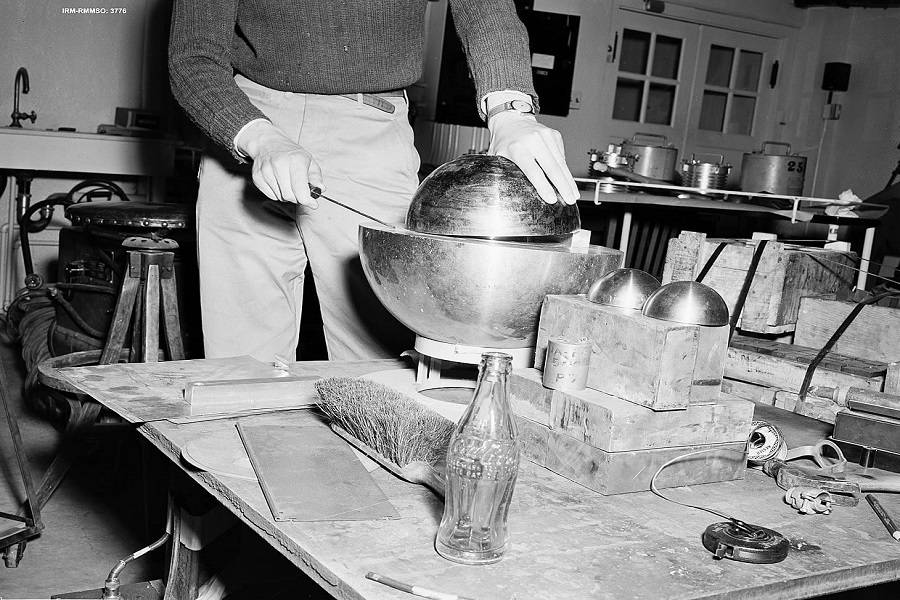Human Experiments: The Manhattan Project’s Fatal Radiation

Wikimedia CommonsA Manhattan Project researcher recreates the “demon core” accident that killed one of the project’s scientists. When physicist Louis Slotin dropped a beryllium shell over a plutonium core by accident, he received a half-second burst of neutrons and gamma rays that killed him nine days later.
While many know the Manhattan Project as the program that eventually produced the world’s first atomic bomb, few realize that the project also sought to test the effects of radiation on human beings.
Some of this research was conducted accidentally, as when project scientist Harry Daghlian triggered a sudden burst of radiation from a plutonium core he was working on and exposed himself to a fatal dose of gamma rays that killed him an 25 excruciating days later. The whole time he was languishing in the hospital, Daghlian was covertly observed by medical researchers attached to the project to chart his decline and death.
This was perhaps a bit ghoulish, but Daghlian had exposed himself by violating safety standards, and the observations didn’t make his condition any worse than it already was. Other people wouldn’t be so lucky.

Wikimedia CommonsWorkers line up for their paychecks at the reactor site in Hanford, Washington. Unbeknownst to these workers, they and other nuclear technicians were being secretly monitored for the effects of radiation exposure.
As early as 1943, project staff suspected that some workers’ physical ailments were related to their work. In the case of one worker, a woman suffering from kidney failure, an internal memo discussed whether or not to alert her to the potential cause: chronic exposure to radioactive polonium.
The decision was made to conceal the facts. Later, with help from the Universities of Chicago and California, and from the military hospital at Oak Ridge, Tennessee, living human patients were injected with polonium and other radioactive elements to study their effect on the body.
Project scientists delivered a batch of radiosodium in a crate to the University of Rochester medical school, then took it out to the alfalfa field next door and loaded it into sprinklers to study how it spread through the environment and to work out shielding requirements to protect the students in adjacent buildings.
Eventually, hundreds of people, including 57 mentally handicapped children in Massachusetts and more than 100 disabled adults in Chicago, were fed or injected with plutonium, which holds the distinction of being one of the most dangerous substances in the world for human health.
From 1951 to the early 1970s, the Manhattan Project, later reorganized as the Atomic Energy Commission, gathered exposure data and tracked the fates (most of them really bad) of the unwitting test subjects. Many of the files on this research are still classified and therefore unavailable to potential plaintiffs in lawsuits.
The idea seems to wait until the last test subject in the human experiments dies before releasing them. Given the nature of the research, it may not be a long wait.





